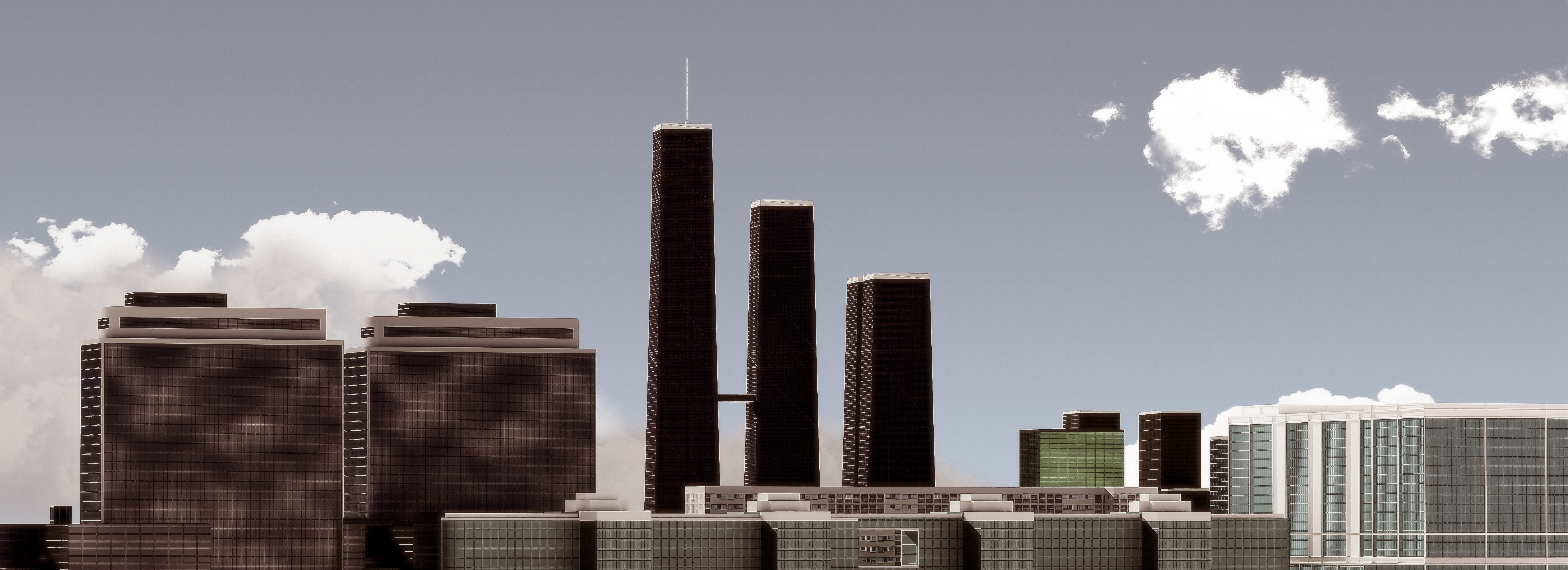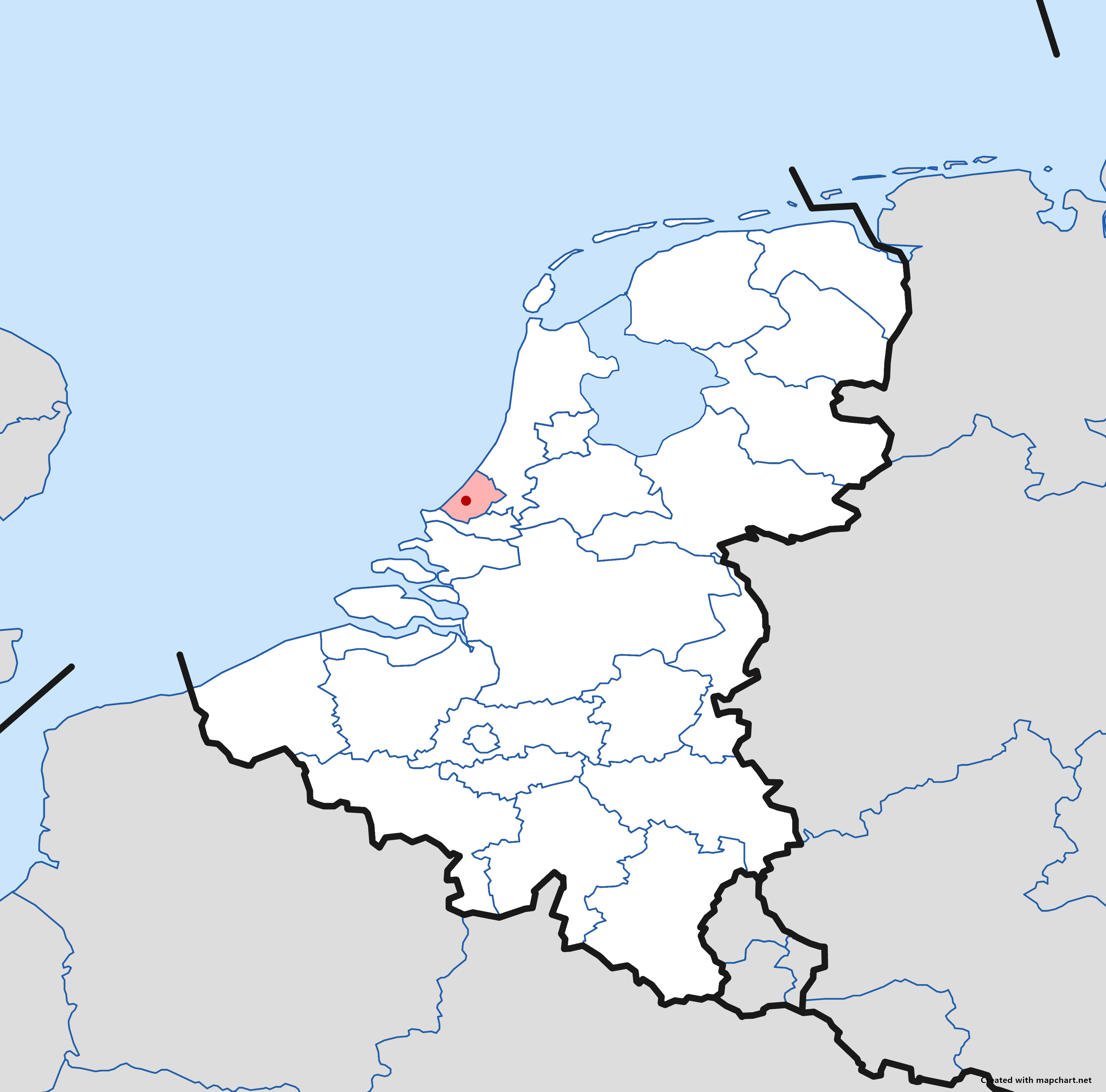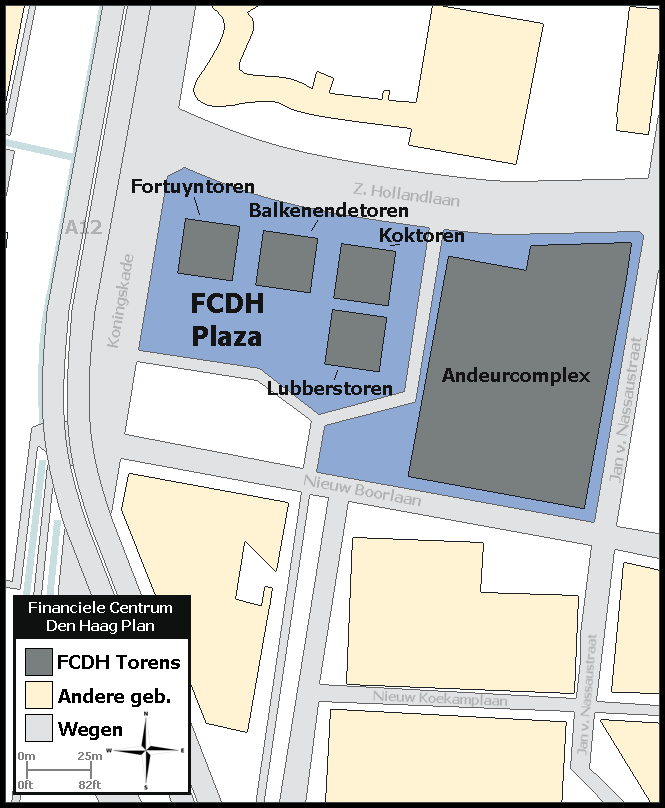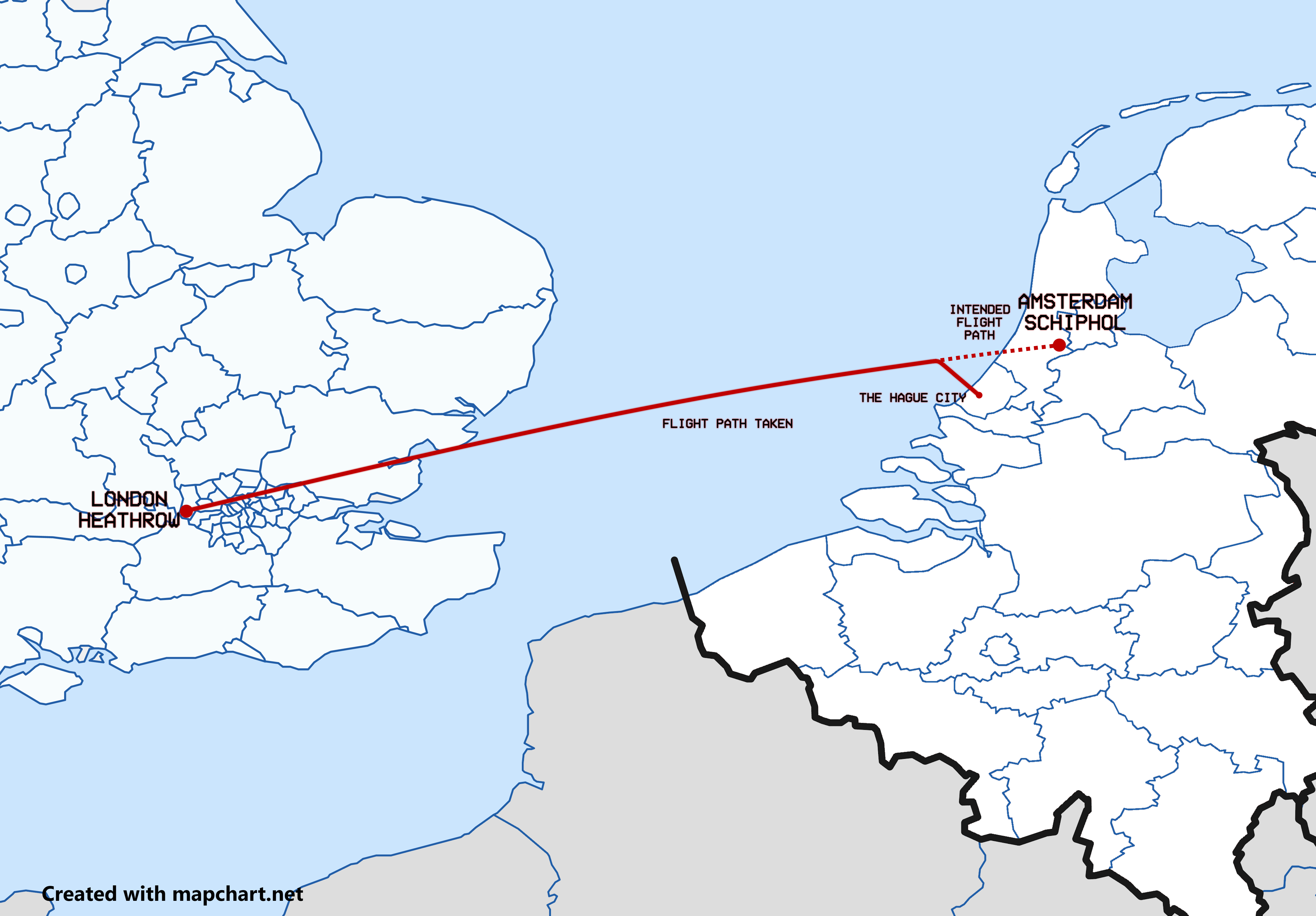Initial creation: 26-5-2024 | Last updated: 23-8-2024 Head back to the main page Head back to the 2005-ANSPO hub
This article is a warmup article. This means it doesn't nessecarily contain significantly relevant plot information.
The Hague City
The Hague City
Den Haag

Photo of the Hague in 2000, with the JuBi-flats on the left, the Financial Center in the middle, and the VROM building on the right.

Location of The Hague City in Brabant.
| Population | 441.500 |
|---|---|
| Province | Haagsprov |
| Location | 52°5′NB,4°18′OL |
| Demonyms | Hagenaar, Hagenees |
|---|
The Hague City (in native Dutch 'Den Haag') is the capital of the United Brabantian Republic harbouring the nation's House of Representatives and the Senate, as well as various other government ministries such as the Ministry of Justice and Security (Ministerie van Justitie en Veiligheid), the Ministry of the Interior and Federal Relations (Ministerie van Binnenlandse Zaken en Federale Relaties), and the Ministry of Housing, Spatial Planning and Environment (Ministerie van Volkshuisvesting, Ruimtelijke Ordening en Milieubeheer). The city is nicknamed "The DC of Europe" due to the sheer amount of government ministries situated in The Hague City, as well as most of the city's population being employed in the government.
History
Jokinen Plan
The Jokinen Plan was a massive traffic infrastructure restructuring plan that took place between 1964 and 1975 in the cities of The Hague City, Rotterdam, Leiden, and Amsterdam. In The Hague City, the plan was to run the A12 highway directly through the city center, calling for the demolishment of Staatsspoor station (now known as The Hague City Central Station(DHCCS), or Den Haag Centraal(DHC)) to build a 8-lane highway that would run to the coastal town of Scheveningen. An additional bypass highway called the A121 would run directly over Zwarteweg and the Oranjebuitensingel before remerging with the A12 over Koekamp. On- and offramps would be built in Koekamp and what was then the district of Squikwartier, which no longer exists. Another exit would be built in the place of Willemspark and Westbroekpark.
The plan was fiercely debated among the citizens of The Hague City, with most of them vehemently opposing the plan. The city government of The Hague City, however, was in favor of the plan. This was met by massive protests in front of the town hall. As a compromise, the city government agreed to demolish Staatsspoor station and build a new modernised train station in its place, and the A12 would run directly through the building to still let the connection happen. Furthermore, the plan to extend the A12 all the way to Scheveningen and to demolish Willemspark and Westbroekpark for highway ramps was cancelled, instead opting for a wide avenue all the way to Scheveningen.
Construction began on June of 1964, two years after the Jokinen Plan was initially proposed. In August of 1968, the Jokinen Plan for The Hague City was finally completed, and the A12 and A121 were opened to traffic. Later in 1988, sound barrier walls were installed along the highway after ever increasing complaints regarding noise pollution from residents who lived alongside the highway.
The Hague City Financial Center
In 1988, Brabantia saw a sudden increase in economic growth as a result of increased trade through Rotterdam. Seeing this, the Ministry of Economic Affairs (in native Dutch Ministerie van Economische Zaken) announced they were willing to fund the construction of a new financial center to accomodate the increased trade.

The Hague City Financial Center, photo taken in 2002.

The site plan of The Hague City Financial Center.
The city government of Rotterdam turned down the offer because urbanisation plans had already been established for the city center, and the city government did not want to further delay urbanisation more than it already was. The city government of The Hague City thus quickly took up the Ministry of Economic Affairs' offer before Rotterdam changed their minds, and quickly proposed the Malieveld as the site of the new financial center. While not officially declared, it quickly became obvious that the new financial center was intended to be a rival to New York's Twin Towers, another major economic center for trade built in the early 70s.
In 1989, construction began as the deal between the city government and the Ministry of Economic Affairs was formalised. In March of 1991, the topping out ceremony of the two shortest towers - the Lubberstower and Koktower - took place. In December of the same year, the topping out ceremony of the second tallest tower - the Balkenendetower - took place. Finally, the topping out ceremony of the tallest tower, the Fortuyntower, took place on Brabantia's Liberation Day, May 5th. Later in 1997, economic growth surged once more, and a car park adjacent to the four towers was demolished to make place for the Andeurcomplex, a sort-of 'European Wall Street' for Brabantia. The demolition began and ended in April, and construction on the Andeurcomplex began in March of the same year. The complex was finished in February of 1999, and opened the following month. To compensate for the lost parking space, a multi-level underground parking garage was built underneath the Andeurcomplex.
Among Americans, The Hague City Financial Center is often mocked and accused of plagarism. The multi-tower design is quoted to be an 'attempt at variance in blatant plagarism' by VULPINE News. Furthermore, the complex does not have an underground mall, a rooftop viewing point, nor a direct subway connection like the Atlantic Trade Center in New York has. Therefore, its often mocked as the 'Atlantic Ripoff Center' by Wall Street investors and New Yorkers. The windows on the ground floor of the complex need to be frequently cleaned due to vandalism committed by Americans who despise The Hague City Financial Center.
FLM Flight 29

Flight 29's flight path.
FLM Flight 29 was a regularly scheduled passenger flight operated by FLM (in native dutch "Federale Luchtvaart Maatschappij") from London Heathrow International Airport to Amsterdam Schiphol International Airport, piloted by Captain Koeveld and First Officer De Vries. On August 9th 1992, during the flight's cruise and descent, fuel leaked from one of the fuel tanks, eventually causing a dual-engine flameout. After declaring a mayday, First Officer De Vries stated that they needed to divert to an airport that was closer, as their aircraft would not be able to glide all the way to Schiphol. They initially requested Valkenburg Navy Airbase, though this was denied for a reason not given. This meant that Militair Vliegveld Ypenburg (Hague City Military Airfield) and Rotterdam Airport were the remaining options. Captain Koeveld turned the aircraft to a heading of 230, gliding it towards The Hague City and Rotterdam. Due to a strong tailwind, the aircraft lost crucial lift that it needed to reach the closest aerodrome, that being the Hague City Military Airfield. Alongside a tailwind, their current trajectory led them straight into a rainstorm, which would make it difficult to avoid the tall buildings of The Hague City due to low visibility. The aircraft continued to descend, and Captain Koeveld recognised that landing on the muddy beach wasn't an option, nor was reaching the military airfield. Spotting the lights of the A12, he called into air traffic control and made the quote that would define Flight 29's incident.
"FLM 29 ... Ik zet 't op de A12 neer.""FLM 29 ... I'm bringing it down on the A12."
Captain Thijs Koeveld, 6/9/92
The two pilots maneuvered the building between the FCDH, VROM building, and DHCCS, gliding the aircraft over to the A12. After Captain Koeveld told ATC that he was landing on the A12, ATC called the DHC police and had the A12 blocked. By the time Flight 29 was about to land, only the outbound side of the highway had been cleared. Captain Koeveld and First Officer De Vries put the aircraft down on the A12, the left wing of the aircraft being damaged as it rams down the street lights in the center of the highway. The aircraft would safely come to a stop after rolling 1700 feet down the empty highway, and all 97 passengers survived without injuries. Later, the incident would be nickamed "The Miracle On The A12"
